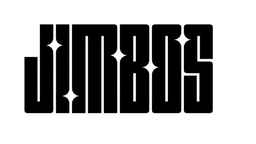Wet Sanding vs Polishing: What’s the Difference and When to Use Each
Wet sanding and polishing are both used to correct paint—but they’re very different techniques with very different risks. Here’s how to know which one your car actually needs.
What Is Wet Sanding?
Wet sanding uses ultra-fine abrasive paper (usually between 1,000–3,000 grit) and water to remove texture and defects by physically leveling the clear coat.
It’s typically used for:
- Severe orange peel
- Heavy scratches
- Paint runs or texture after a respray
- Spot repair blending
What Is Polishing?
Polishing uses foam or microfiber pads and an abrasive polish to refine the paint surface and remove swirls, oxidation, and haze. It’s non-invasive compared to sanding and safer for most DIYers or pros.
When Should You Polish Instead of Sand?
Always try polishing first. You can correct:
- Swirl marks
- Water spot etching
- Fading or dull paint
- Light scratches and haze
And you can do all of that using just Picture Perfect Polish with the correct pad:
- Cut & Finish Pad – for correction
- Black Finishing Pad – for refining gloss
Why Wet Sanding Should Be Your Last Option
Wet sanding removes a lot of clear coat—fast. You only want to wet sand when:
- You’ve tried polishing and defects are still visible
- You’re doing a paint correction on a resprayed or show car
- You’re trained and confident in sanding safely (with a paint gauge)
Pro Tip: Use a Test Spot First
Try polishing the defect with Picture Perfect Polish + Cut & Finish Pad. If it improves but doesn’t fully disappear, step up pressure or pad. Only sand if you’ve maxed out your safe polishing potential.
Comparison Table
| Method | Best For | Risk Level | Finish Quality |
|---|---|---|---|
| Polishing | Swirls, oxidation, haze | Low | High gloss |
| Wet Sanding | Orange peel, deep defects | High | Needs compounding and polishing after |
Recommended Correction System
Related Posts
Frequently Asked Questions
Can I wet sand by hand?
Yes—but it’s risky if you don’t have a paint thickness gauge. Machine sanding is more consistent but still requires experience.
What grit should I use if I do wet sand?
Start at 2,000 or 3,000 grit. Never jump into 1,000 grit unless you’re fixing serious texture or damage.
Do I need to polish after sanding?
Always. Wet sanding dulls the surface completely—you must compound and polish to restore gloss.
Can I use Picture Perfect Polish after sanding?
Yes—after compounding, switch to Picture Perfect Polish with the Black Finishing Pad for your final pass.



